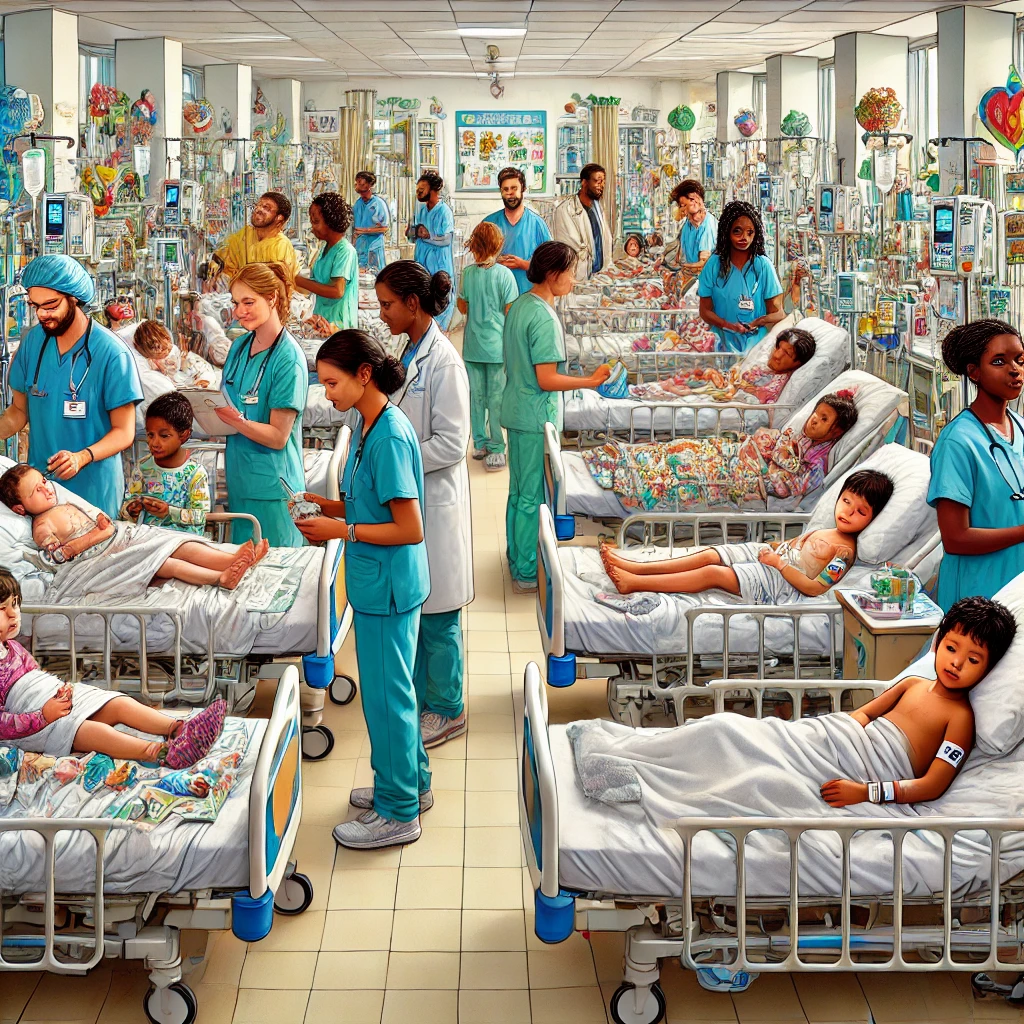Understanding the Types, Symptoms, and Management
Have you ever wondered why your family doc asks you to get a blood test when you make a routine office visit? Checking your A1c is one of the reasons why. At any age, but especially as you get older, you need to watch for symptoms of diabetes. Caring for ourselves and others in managing this disease is important. Something as simple as planning a dinner for family and friends may involve thinking about a person’s dietary restrictions, particularly if they have recently been diagnosed and are not yet comfortable with the diet. Even if you are not diabetic, please continue to read as I’ve included pertinent information about this disease to help you understands how it can affect your family and friends.
Diabetes is a group of chronic conditions affecting millions of people worldwide and not all cases of diabetes are the same. The two most common types, Type 1 and Type 2, involve elevated blood sugar levels but differ in their causes and management. At its simplest, Type 1 diabetics do not produce insulin and require supplementation. Type 2 diabetics produce insulin, but their bodies are resistant to its effects. According to the American Diabetes Association, as of 2021, approximately 11.6% of the U.S. population, or 38.4 million Americans had diabetes. Additionally, almost one-third of Americans have prediabetes. This includes both diagnosed and undiagnosed cases.
This guide will explain the key differences between the two types, highlight the role of the A1c test in diagnosis and care, and explore the consequences of poorly managed diabetes. Additionally, we will discuss a related condition, prediabetes, which serves as an early warning sign for Type 2 diabetes.
If you have been diagnosed with diabetes you probably are familiar with most of what is in this article. If you have not been diagnosed with diabetes you may find it interesting as it describes the diagnosis, management and genetic properties of diabetes. It also discusses how you can support family and friends who are living with the disease.
Type 1 vs. Type 2: What’s the Difference?
Historically, terms like “insulin-dependent” and “non-insulin-dependent” diabetes, as well as “juvenile” and “adult-onset” diabetes, were used to describe these conditions. Modern terminology now reflects their underlying causes as Type 1 and Type 2 diabetes.
Type 1 Diabetes
Type 1 diabetes is an autoimmune disorder in which the immune system attacks insulin-producing cells in the pancreas. Without insulin, glucose cannot enter cells for energy, leading to its buildup in the bloodstream. Symptoms such as excessive thirst, frequent urination, fatigue, and unintentional weight loss often appear suddenly, typically in childhood or early adulthood.
Type 1 diabetes has a strong genetic component, with heritability estimates ranging from 40% to 50%. Having a first-degree relative—parents and siblings—with Type 1 diabetes increases the risk, but the inheritance pattern is complex. Identical twins have a 40-50% concordance rate for Type 1 diabetes
Management requires:
- Insulin Therapy: Administered through injections or an insulin pump.
- Dietary Management: Balanced meals to regulate blood sugar levels.
Type 2 Diabetes
Type 2 diabetes is often associated with lifestyle factors, including obesity, poor diet, and inactivity, though genetics also play a significant role. In this condition, the body becomes resistant to insulin, and over time, the pancreas may fail to produce enough insulin. Symptoms develop more gradually and may include fatigue, increased thirst, and slow-healing wounds.
Type 2 diabetes has an even stronger genetic component than Type 1, with heritability estimates ranging from 20% to 80%. First-degree relatives of individuals with Type 2 diabetes are about 3 times more likely to develop the disease. The lifetime risk is 40% for individuals with one parent with Type 2 diabetes and 70% if both parents are affected. Identical twins have a higher concordance rate (about 70%) compared to fraternal twins (20-30%).
Management strategies include:
- Lifestyle Modifications: Weight loss, improved diet, and regular exercise.
- Medications: Oral and injectable medications are the usual management choice, though insulin may be needed in advanced stages.
- Reversal Potential: Some individuals can manage or even reverse the condition through sustained lifestyle changes.
Prediabetes: An Early Warning Sign
Prediabetes—first recognized as a distinct medical condition in the late 1990s—occurs when blood sugar levels are higher than normal but not high enough to be classified as diabetes. It is a significant risk factor for developing Type 2 diabetes and associated complications like heart disease. Risk factors include:
- Being overweight, especially with abdominal fat.
- Physical inactivity.
- Family history of Type 2 diabetes.
- Age over 45.
- Certain ethnic backgrounds (e.g., African American, Hispanic, Native American, or Asian American).
- Coexisting conditions such as high blood pressure, high cholesterol, or polycystic ovary syndrome (PCOS).
Early intervention—including weight management, improved diet, and regular physical activity—can often prevent or delay progression to diabetes.
Diet management: Keystone to Lifestyle Modification.
Managing diabetes involves maintaining stable blood sugar levels, and diet plays a crucial role in achieving this. While no food is entirely off-limits, certain restrictions help control blood sugar and prevent complications.
Carbohydrates are the primary focus in a diabetic diet, as they directly impact blood sugar. Foods like white bread, sugary drinks, pastries, and processed snacks should be limited due to their high glycemic index, which causes rapid blood sugar spikes. Instead, opt for complex carbs such as whole grains, legumes, and vegetables, which release glucose slowly.
Sugary foods, including desserts, candies, and sweetened beverages, should also be restricted. These items can cause unpredictable blood sugar fluctuations. If indulging occasionally, pair them with a protein or healthy fat to moderate the impact.
Saturated and trans fats, commonly found in fried foods, processed snacks, and fatty cuts of meat, should be minimized. These fats increase the risk of heart disease, which is already higher in people with diabetes.
The Role of A1c in Diagnosis and Management
The hemoglobin A1c test provides a snapshot of average blood sugar levels over the past two to three months. It is a critical tool for diagnosing and managing diabetes.
Diagnosis
- Normal: Below 5.7%.
- Prediabetes: 5.7% to 6.4%.
- Diabetes: 6.5% or higher on two separate tests.
Management
For most people with diabetes, the goal is to maintain an A1c level below 7%. Individual targets may vary based on age, health, and risk of hypoglycemia. Some studies have found that Type 2 diabetics can suffer adverse outcomes from consistently lowering the A1c below 5%. All management decisions should be made in consultation with your physician. Never start, stop or change dosage of diabetic medications on your own.
Key considerations include:
- Type 1 Diabetes: Insulin adjustments based on daily glucose checks and A1c trends.
- Type 2 Diabetes: A combination of lifestyle changes, oral or injectable medications, and insulin as needed.
- Prediabetes: Lifestyle modifications to lower A1c and reduce the risk of diabetes.
Consequences of Poorly Managed Diabetes
Failing to manage diabetes can lead to severe complications affecting nearly every organ system:
- Cardiovascular Disease: High blood sugar damages blood vessels, increasing the risk of heart attacks, strokes, hypertension and reduced circulation to the legs.
- Neuropathy (Nerve Damage): Tingling, pain, or numbness, particularly in the legs and feet, can contribute to infections and amputations.
- Kidney Disease (Nephropathy): Damaged kidney blood vessels can result in kidney failure, requiring dialysis or transplant.
- Eye Damage (Retinopathy): Diabetes is a leading cause of blindness due to damage in the retina.
- Increased Infections: Impaired circulation and healing make infections harder to treat.
- Diabetic Ketoacidosis (DKA): A life-threatening condition in Type 1 diabetes caused by acid buildup due to fat metabolism.
- Hyperosmolar Hyperglycemic State (HHS): Seen in Type 2 diabetes, this condition involves severe dehydration and confusion due to extremely high blood sugar levels.
What Can You Do to Help?
Supporting a loved one with diabetes requires understanding, encouragement, and teamwork. Family and friends can play a vital role in helping someone manage their condition effectively.
- Educate yourself: Learn about diabetes, its challenges, and treatment options. Understanding the basics of blood sugar levels, medication, and dietary needs enables you to provide informed support.
- Be supportive, not critical: Avoid judgmental comments about their food choices or habits. Instead, encourage them to make healthier decisions without pressure or guilt.
- Create a supportive environment: Keep healthy food options available at home and participate in physical activities together, like walking or cycling. This fosters a shared commitment to well-being.
- Offer emotional support: Diabetes management can be stressful. Be a good listener and offer reassurance during difficult times. Celebrate their successes, no matter how small.
- Attend appointments or classes: If invited, accompany them to medical appointments or diabetes education classes. This shows you’re invested in their health journey.
- Learn to respond to emergencies: Know the signs of hypoglycemia (low blood sugar) or hyperglycemia (high blood sugar) and how to act. This preparedness can be life-saving.
By being empathetic and proactive, family and friends can help a loved one with diabetes feel empowered, cared for, and less isolated.
Conclusion
Type 1 and Type 2 diabetes, though different, are both serious conditions requiring proactive management. The A1c test plays a vital role in diagnosis and long-term care, offering insight into overall blood sugar control. Proper management, including lifestyle changes, medications, and regular monitoring, can prevent complications and significantly improve quality of life. Staying informed and working closely with healthcare providers are essential steps to living well with diabetes.
By taking action early and consistently, individuals can mitigate risks and lead healthier, more fulfilling lives.











Hijacked Healthcare- A System In Crisis
By John Turley
On February 8, 2025
In Commentary, Medicine, Politics
For more than 30 years I have watched our health care system become increasingly more politicized. As a physician I have become concerned with the direction it has recently taken.
Until the early 20th century healthcare was mostly private, and medical expenses were out of pocket. Early calls for national health insurance began with labor organizations and were quickly joined by progressive politicians. President Franklin Roosevelt wanted to include health insurance in the Social Security Act of 1935 but was unable to get it passed. President Harry Truman also proposed a National Health Insurance program in 1945, but it was denounced as socialized medicine. All these efforts were opposed by business interests, conservative politicians — particularly southern— and surprisingly, the American Medical Association.
Finally in the 1960s as part of his “Great Society” programs President Lyndon Johnson pushed for the passage of both Medicare and Medicaid. Rising costs of health care under President Richard Nixon led to the introduction of Health Maintenance Organizations (HMOs) as an attempt to encourage cost efficiency. President Ronald Reagan reduced federal health care spending and pushed for more privatization. In the 1990s President Bill Clinton attempted to introduce universal health coverage but it was met by fierce opposition from the insurance industry, business, and the Republican Party who labeled it as government “overreach”. Finally in 2010 President Obama’s Affordable Care Act (ACA) also called “Obamacare” became the most significant health care reform since Medicare and Medicaid. It also faced legal challenges and political resistance with the Republicans consistently attempting to repeal it. During his first term, President Donald Trump reduced ACA funding and repealed the individual mandate penalty that had required people who did not maintain health insurance to pay a fee. The elimination of the penalty weakened the law and reduced the number of people who sought coverage. We can expect further efforts to weaken the provisions of the ACA but given that it is well entrenched in the US healthcare system now is unlikely that it will be completely repealed.
While early health care programs faced significant controversy and strong debate, progress in providing expanded coverage and improved care was continuous. I’m concerned that we’re about to enter an era where many of our gains in public health are going to be reversed. The United States remains unique among wealthy nations as the only one without universal health care and I fear that we will begin to lose what gains we have made over the past several decades.
I’ve written previously about my concerns with vaccine resistance and the elimination of vaccination requirements for school children. I believe that this is an impending public health disaster and I’m afraid there are even greater disasters on the horizon.
Robert F. Kennedy Jr has been nominated by President Trump to be the secretary of Health and Human Services and by the time you read this he may well have been confirmed. During his confirmation hearings Kennedy has made a few positive statements. He’s expressed an intent to increase focus on chronic diseases such as diabetes and obesity. He has indicated support for rural hospitals. He would like to increase training for physicians in addiction care and increase access to treatment programs. He is also indicated plans to improve American diet by targeting ultra processed foods, contaminants in food, and placing restrictions on food additives. He also has proposed reforms to include stricter FDA oversight of the food supply.
However, there are several very troubling aspects to his nomination. He has a history as a vaccine denier although he is currently denying that denial. He said he is not anti vaccine but is pro safety. He has stated he will support polio and measles vaccines and that all his children have been vaccinated. (In 2020, while speaking on the podcast of his nonprofit organization Children’s Health Defense, Kennedy said that he would do anything, pay anything to be able to go back in time to avoid giving his children the vaccines that he gave them.) Given his history of anti vaccine statements and the fact that he profits from anti vaccine litigation it’s likely he will return to previous anti vaccine positions once confirmed.
He has proposed significant changes to both the CDC and the NIH including significant staff changes. He has proposed redirecting funding to preventative/alternative medicine.
Most troubling is his poor understanding of Medicare and Medicaid programs. During questioning he showed a lack of understanding of the funding sources and statutory requirements of the two programs.
The Centers for Disease Control (CDC) faces considerable threat. House Republicans have proposed a $1.8 billion cut (22%) to CDC’s budget. These budget cuts target programs that address opioid overdoses, firearm injuries and food safety monitoring. This budget conflicts with Kennedy’s statements about his priorities and it remains to be seen how this will be resolved. The Heritage Foundation’s Project 2025 has advocated splitting the CDC into two separate entities: one for data collection and another for limited public health guidance. The intent is to reduce its influence on social policies. The administration has already imposed communications restrictions, requiring that CDC announcements, social media posts and scientific reports undergo political review. There is currently a proposal to reduce the in-house reviews of medical research; there is even a proposal to “deputize the public” to challenge scientific findings used in regulations. This would leave medical research open to review by the least qualified. Unfortunately, he current nominee for CDC director, David Weldon, a physician and former republican congressman, has signaled his intent to narrow the agency’s scope and his support for administration policies.
Highly contentious issues such as gender affirming care and reproductive health have already been severely restricted. It is likely that these areas will come under continued attack by the current administration.
This administration also poses a threat to global health. By executive order the US was withdrawn from the World Health Organization. Additionally, the US Agency for International Development (USAID) has been significantly reduced with all major programs placed on hold. Not only does USAID support foreign aid programs, but it is also a major player in global health.
USAID sponsored programs identify and monitor disease outbreaks, provide treatment and preventive measures for local populations and provide global disease alerts that help protect United States citizens. We are already seeing the beginnings of a worldwide humanitarian healthcare emergency. Not only will this affect healthcare systems but eventually the economic systems in countries who have lost their access to modern medical assistance. We will lose the advanced notice about disease outbreak and spread. Without this remote surveillance, it is possible that we may be caught unaware by the next pandemic until it is ravaging our population.
This administration claims to support “the average American” yet it seems to be intent on destroying all our health.